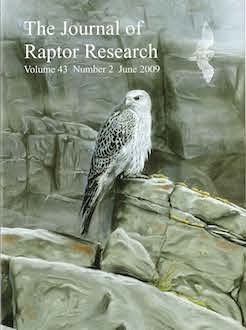I used band recovery data to examine distances between banding and recovery locations for 154 nestling Florida Bald Eagles and discuss the implications for understanding natal dispersal and philopatry in this species. Band recoveries occurred in 23 U.S. states and five Canadian provinces between 1931–2005. Recovery distance from the natal nest averaged longer for the youngest age classes (ANOVA: F = 3.59; df = 5, 153; P = 0.005), for individuals banded in earlier decades (F = 1.94; df = 5, 153; P = 0.093), and for the months of May through October (F = 3.10; df = 12, 153; P < 0.001). Of 35 individuals classed as mature (≥3.9 yr old when recovered; range 3.9–36.5 yr), 31 were located within Florida, which suggested a strong degree of philopatry to the natal state. Among 21 mature eagles of known sex with known banding and recovery locations in Florida, females, particularly younger birds, had longer recovery distances (N = 9, mean = 93 km, SE = 22.4) than did males (N = 12, mean = 31 km, SE = 5.3; t = 2.67, df = 19, P = 0.026). The records examined here suggest a high degree of philopatry and relatively short natal dispersal distances, particularly in male Bald Eagles.
How to translate text using browser tools
1 June 2009
Recovery Distances of Nestling Bald Eagles Banded in Florida and Implications for Natal Dispersal and Philopatry
Petra Bohall Wood
ACCESS THE FULL ARTICLE

Journal of Raptor Research
Vol. 43 • No. 2
June 2009
Vol. 43 • No. 2
June 2009
Bald Eagle
band recovery distance
banding
Haliaeetus leucocephalus
natal dispersal
philopatry
recovery




